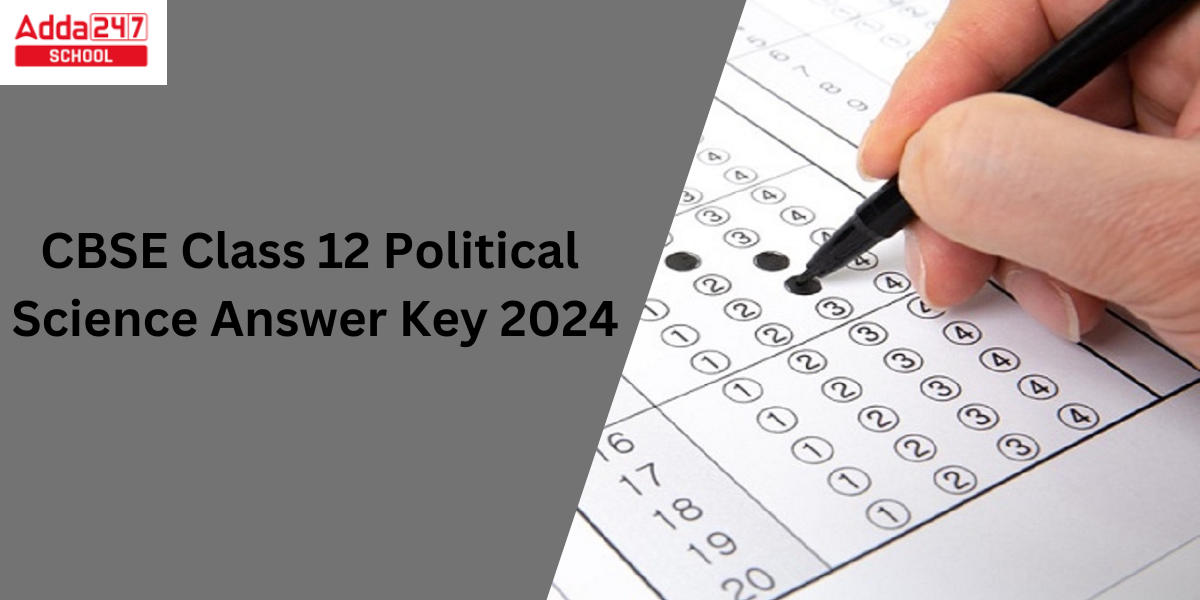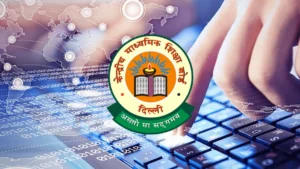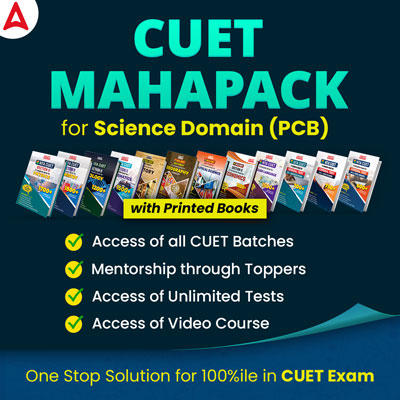Table of Contents
The CBSE Class 12 Political Science exam is now over. The duration of the CBSE Class 12 Political Science Paper is 3 hours from 10:30 A.M to 01:30 P.M. As the exam in now completed, our in-house experts provided the CBSE class 12 political science answer key 2024 with a detailed explanation on this page, students can use these answer key to cross-check their responses.
Class 12 Political Science Answer key 2024
The CBSE class 12 political science answer key 2024 includes all the correct answers with proper numbering. If you appeared in the exam and looking for the Class 12 Political Science Answer Key then you are at the right place. Instead of roaming various sites on the Internet, Stay tuned with us. Here we have provided the class 12 political science answer key 2024 for all Sets 1,2,3,4 prepared by the Adda247 Expert team.
Class 12 Political Science Answer Key 2024 & Paper Pattern
The pattern of the CBSE Class 12 Political Science Question paper is based on the sample paper provided by the board. As per the exam pattern, the CBSE Class 12 Political Science exam is of 100 marks, Out of the 80 marks are allocated for the theory exam and the remaining 20 marks are allocated for the project and internal assessment. To pass this exam, students are required to achieve 33% of the total marks. Although there is now a negative marking on the paper. Check out the many features of the class 12 political Science exam given below.
| Particulars | Details |
| Exam Conducting Body |
Central Board of Secondary Education (CBSE)
|
| Name of Examination |
CBSE Class 12 Board Examination 2024
|
| Subject | Political Science |
| Mode of Exam | Offline |
| Exam Duration | 3 Hours |
| Medium of Exam | English / Hindi |
| Type of Questions |
MCQs, Short and Long Answer Type Questions
|
| Theory Marks | 80 |
| Practical / Internal Assessment | 20 |
| Total Marks | 100 |
| Passing Marks |
33% in aggregate
|
| Negative Marking | No |
Class 12 Political Science Answer Key 2024 for All Sets
The Class 12 Political Science paper will conclude at 01:30 P.M. Once the exam is over, the expert team will start evaluating today’s question paper along with detailed answers. The CBSE class 12 political science answer key 2024 allows students to cross-check their answers and forecast the final scores they will receive. Candidates are recommended to bookmark this and keep refreshing the page so that you can get the class 12 political science answer key 2024 for your sets at the earliest.
Class 12 Political Science Answer Key 2024 Set 1
SECTION – A
Question No. 1 to 12 are Multiple Choice type questions carrying 1 mark each.
12×1=12
1. Arrange the following events in chronological order and choose the correct option as answer:
(i) Indo-Russian Strategic Agreement
(ii) The Soviet invasion of Afghanistan
(iii) Disintegration of the Soviet Union
(iv) Socialist Revolution in Russia
(A) (i), (ii), (iii), (iv)
(C) (iv), (ii), (iii), (i)
(B) (ii), (iv), (iii), (i)
(D) (iii), (i), (ii), (iv)
Answer: (C) (iv), (ii), (iii), (i)
2. Which one of e of the following was India, just after independence? e planned formed development of
(A) Election Commission
(B) Planning Commission
(C) Shah Commission
(D) NITI Aayog
Answer:(B) Planning Commission
3. Which one of the following Princely States of India initially opposed joining the Indian Union ?
(A) Baroda
(C) Mysore
(B) Hyderabad
(D) Gwalior
Answer:(B) Hyderabad
4. Which one of the following encourages the use of renewable energy?
(A) Energy Conservation Act
(B) Environment Protection Act
(C) Electricity Act
(D) National Auto Fuel Policy
Answer:(C) Electricity Act
5. Match the List-I with the List-II correctly:
| (a) | The first country to liberalise its economy in the South Asian region. | (i) | Maldives |
| (b) | Earlier this country had the Sultan as ita Head of State, Now, it is a republic. | (ii) | India |
| (c) | A land locked country. | (iii) | Pakistan |
| (d) | In the conflict between the military and the pro-democracy groups, the military had prevailed over democracy in this country. | (iv) | Nepal |
Choose the correct option:
Answer:
6. The statement of Assertion (A) following question, a statement is followed by of Reason (R). Choose the correct option as answer. a
Assertion (A): People started protesting against the increase in prices of essential commodities, food scarcity and growing unemployment before the fourth General elections in India.
Reason (R): Failure of monsoons, widespread drought, decline in agricultural production and serious food shortage caused the problem.
Options:
(A) Both the Assertion (A) and the Reason (R) are correct and the Reason (R) is the correct explanation of the Assertion (A).
(B) Both the Assertion (A) and the Reason (R) are correct, but the Reason (R) is not the correct explanation of the Assertion (A).
(C) The Assertion (A) is correct, but the Reason (R) is incorrect.
(D) The Assertion (A) is incorrect, but the Reason (R) is correct,
Answer: (A) Both the Assertion (A) and the Reason (R) are correct and the Reason (R) is the correct explanation of the Assertion (A).
7. Which one of the following developing countries was the successfully control the rate of growth of population?
(A) India
(B) Pakistan
(C) Nepal
(D) Sri Lanka
Answer; (D) Sri Lanka
8. The Planning Commission of India was replaced with NITI Aayog because______________
(A) it had become very old.
(B) it was becoming irrelevant to face the new challenges of development.
(C) it was totally based on Socialist model.
(D) many states were not in favour of Planning Commission.
Answer: (B) it was becoming irrelevant to face the new challenges of development.
9. After the death of Lal Bahadur Shastri, there was an intense competition for the post of the following Crime Minister between Indira Gandhi and which one of
(A) Morarji Desai
(B) K. Kamraj
(C) Nijalingappa
(D) V.V Giri
Answer: (A) Morarji Desai
10.
Assertion (A): Presently the global atmosphere is warming up.
Reason (R): A steady decline in the total amount of Ozone in the earth’s stratosphere.
Options:
(A) Both the Assertion (A) and the Reason (R) are correct, and the Reason (R) is the correct explanation of the Assertion (A).
(B) Both the Assertion (A) and the Reason (R) are correct, but the Reason (R) is not the correct explanation of the Assertion (A).
(C) The Assertion (A) is correct, but the Reason (R) is incorrect.
(D) The Assertion (A) is incorrect, but the Reason (R) is correct
Answer: (A) Both the Assertion (A) and the Reason (R) are correct, and the Reason (R) is the correct explanation of the Assertion (A).
11. Which event marked the end of Communism in the Soviet Union?
(A) Cuban Missile Crisis
(B) Rise of New World Order
(C) Disintegration of the Soviet Union
(D) Rise in US economy
Answer:(C) Disintegration of the Soviet Union
12. Name the state from which Chhattisgarh was carved out.
(A) Uttar Pradesh
(C) Jharkhand
(B) Bihar
(D) Madhya Pradesh
Answer:(D) Madhya Pradesh
Class 12 Political Science Exam Analysis 2024
In CBSE Class 12 Political Science Exam Analysis 2024, we evaluate the question paper based on errors, out-of-syllabus questions, and difficulty level. The Class 12 political science paper is now completed. We spoke to the students about today’s exam. Overall, nearly all students found the CBSE Class 12 Political Science subject to be relatively average, and they expect to perform well on the exam. Some of the general reviews by students are listed below:
- Students judged the Political Science question paper moderately tough.
- The questions were based on the CBSE Class 12 Political Science syllabus and NCERT textbooks.
- Section-A, which comprised of multiple-choice questions, contained simple questions.
- Section B, which consisted of short-answer questions, was similarly direct and scoring.
- Passage-based questions were simple.
- Long-answer questions were both difficult and lengthy.
According to the subject matter experts, the paper had a moderate level of difficulty. The paper pattern matched the format of the official CBSE sample paper. The question paper was balanced, including both factual and conceptual problems. According to experts, pupils who have thoroughly covered the subject will be able to perform well in the exam.
The section-by-section analysis of the CBSE class 12 Political Science will be provided here based on the teachers’ and students’ opinions.
| Parameter |
CBSE Class 12 Maths Exam Analysis
|
| Overall difficulty level of the paper | Moderate |
| Difficulty level of Section A | Easy |
| Difficulty level of Section B | Easy to Moderate |
| Difficulty level of Section C | Moderate |
| Difficulty level of Section D | Moderate |
| Difficulty level of Section E | Moderate |
| Overall expected a good score | To be Updated. |
Class 12 Political Science Marking Scheme
While evaluating the Class 12 Political Science Answer Key 2024, you must first comprehend the marking scheme. The CBSE Class 12 Political Science Theory exam carries 80 points and covers both Part A (Contemporary World Politics) and Part B (Politics in India Since Independence) of the syllabus. The question paper will be divided into five parts (A, B, C, D, and E). There will be an internal choice in Part C (Short Answer Type II in one or two questions) and Part E. (Long Answers to all the questions)
|
Book
|
Objective Type/MCQ (1 mark)
|
Short Answers Type 1 (2 marks)
|
Short Answers Type 2 (4 marks)
|
Passage/Map/Cartoon Based (4 marks)
|
Long Answers (6 marks)
|
Total Marks
|
|
Contemporary World Politics
|
6
|
3
|
3
|
1 (Passage)
|
2
|
40
|
|
Politics in India since Independence
|
6
|
3
|
2
|
2 (Cartoon and map)
|
2
|
40
|
|
Project/ Practical
|
20
|
|||||
|
Total No. Of marks and questions
|
1 x 12 = 12
|
2 x 6 = 12
|
4 x 5 = 20
|
4 x 3 = 12
|
6 x 4 = 24
|
80 + 20 = 100
|
The Class 12 Political Science Board Paper is divided into five sections, numbered A through E. View the mark distribution for the Class 12 Political Science Board Paper below.
- Questions 1 through 12 are multiple-choice questions with one mark each.
- Questions 13-18 are worth two points apiece. Responses to these questions should be no more than 50 words long.
- Questions 19–23 are worth four points apiece. Responses to these questions should be no more than 100 words long.
- Questions 24–26 are based on passages, cartoons, and maps. Respond appropriately.
- Questions 27-30 are worth 6 points each. The answers to these questions should not be longer than 170 words. In 6-mark questions, there is an internal choice.
Class 12 Political Science Answer key & Paper Analysis
Class 12 Political Science Answer Key Last year
Questions no. 1 to 12 are Multiple Choice (MCQ) type questions, carrying mark each. (12×1=12)
5. Two statements are given below one labelled as Assertion (A) and the other Jabelled as Reason (R). Read these statements carefully and choose the correct option as the answer from the options (a), (b), (c) and (d) given below.





 CBSE Class 12 Home Science Answer Key 20...
CBSE Class 12 Home Science Answer Key 20...
 CBSE Class 12 History Answer Key 2025, G...
CBSE Class 12 History Answer Key 2025, G...
 CBSE Class 12 Computer Science Answer Ke...
CBSE Class 12 Computer Science Answer Ke...






